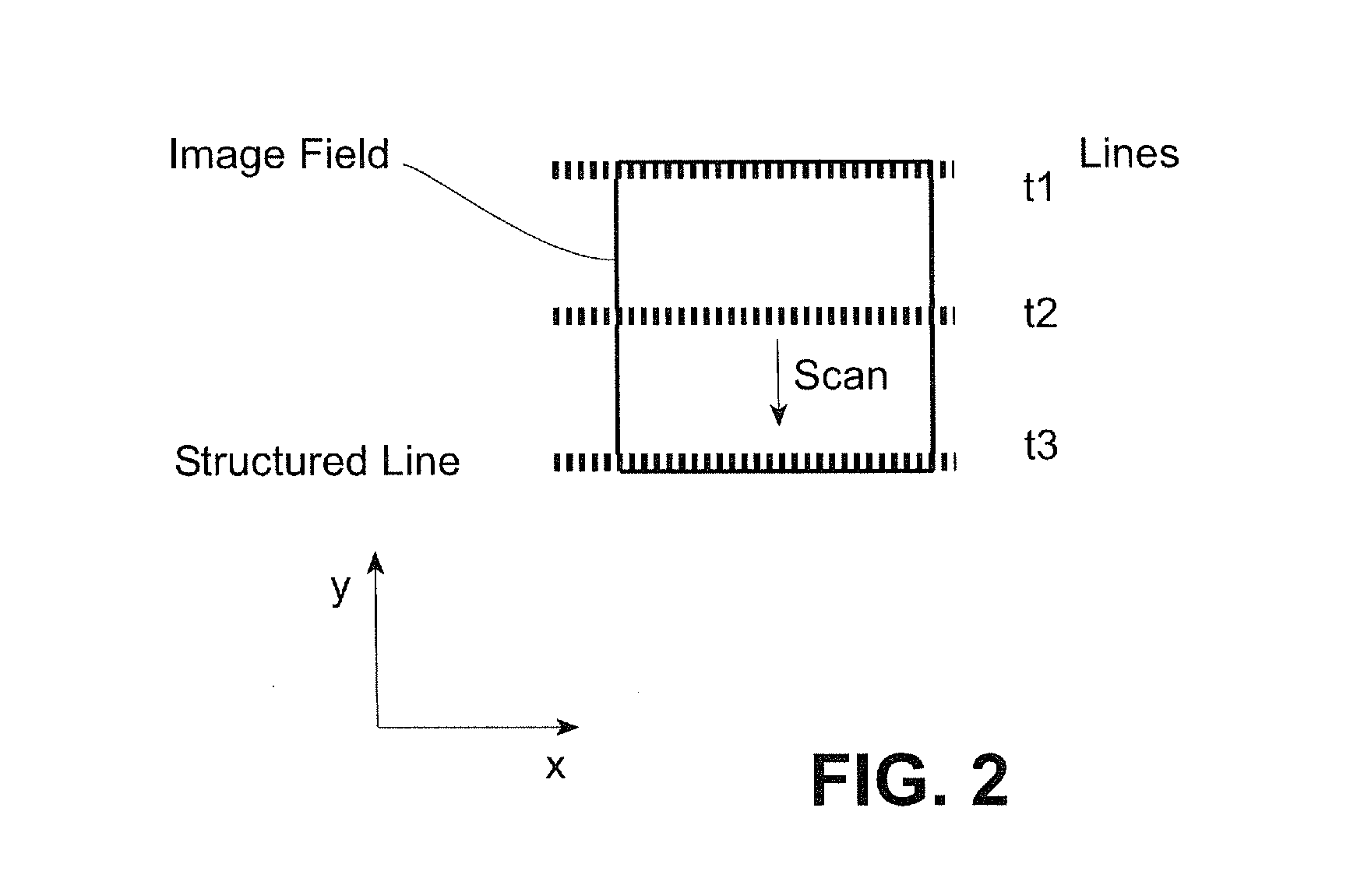Method and configuration for the optical detection of an illuminated specimen
a technology of illumination and optical detection, applied in the field of microscopy, can solve the problems of reducing the signal-to-noise ratio, limiting the useful sample thickness of out-of-focus signals, and limited contrast and resolution enhancement effects, and achieves low light loss and high intensities.
- Summary
- Abstract
- Description
- Claims
- Application Information
AI Technical Summary
Benefits of technology
Problems solved by technology
Method used
Image
Examples
Embodiment Construction
[0018]FIG. 1 shows the schematic assembly of the microscope according to the present invention. (1) is the optical axis, (3) is the light source, (5) is a switchable attenuator / AOM, (8) is a beam-shaping unit with a line-shaping optics system (7), for example, a cylindrical lens, (9) is scanner with an axis of rotation perpendicular to the drawing plane, (23) is a scanner with an axis of rotation (25) substantially parallel to the drawing plane, (11) is a scanning optics system, (13) is a mask with a periodic structure in the intermediate image plane conjugate to the specimen, (15) is a spatially resolved area sensor, e.g., a CCD receiver matrix, (17) is an emission filter, (19) is a main color divider, (21) is a barrel lens, (27) is a microscope lens, and (29) is the specimen. The elements (7) and (13) are combined to form a single mechanical group, the beam-shaping unit (8), which is preferably disposed so as to be able to rotate about the optical axis (1).
[0019]Next, shifting the...
PUM
 Login to View More
Login to View More Abstract
Description
Claims
Application Information
 Login to View More
Login to View More - R&D
- Intellectual Property
- Life Sciences
- Materials
- Tech Scout
- Unparalleled Data Quality
- Higher Quality Content
- 60% Fewer Hallucinations
Browse by: Latest US Patents, China's latest patents, Technical Efficacy Thesaurus, Application Domain, Technology Topic, Popular Technical Reports.
© 2025 PatSnap. All rights reserved.Legal|Privacy policy|Modern Slavery Act Transparency Statement|Sitemap|About US| Contact US: help@patsnap.com



